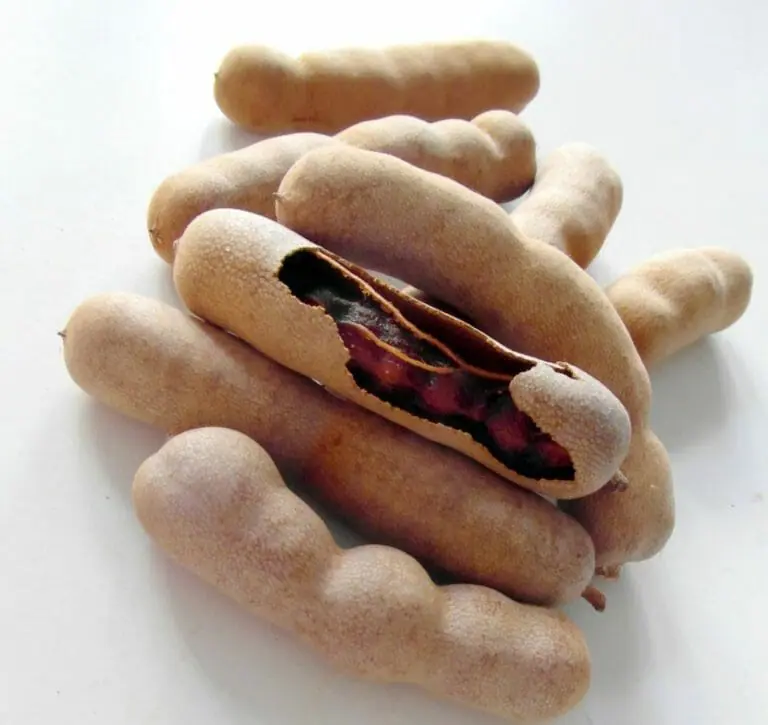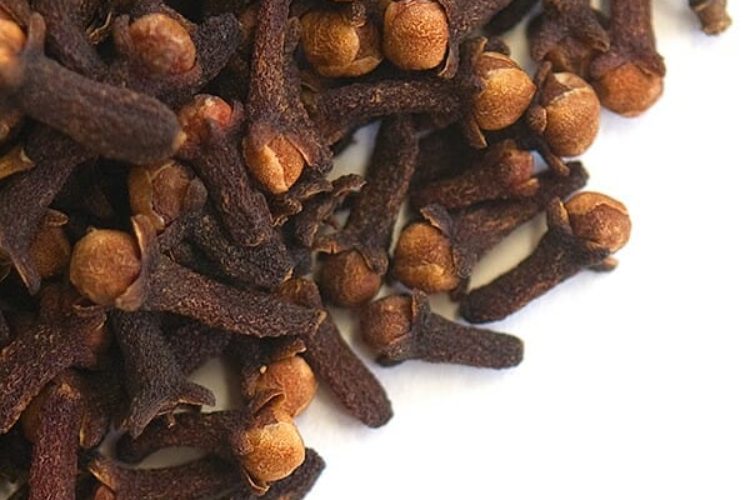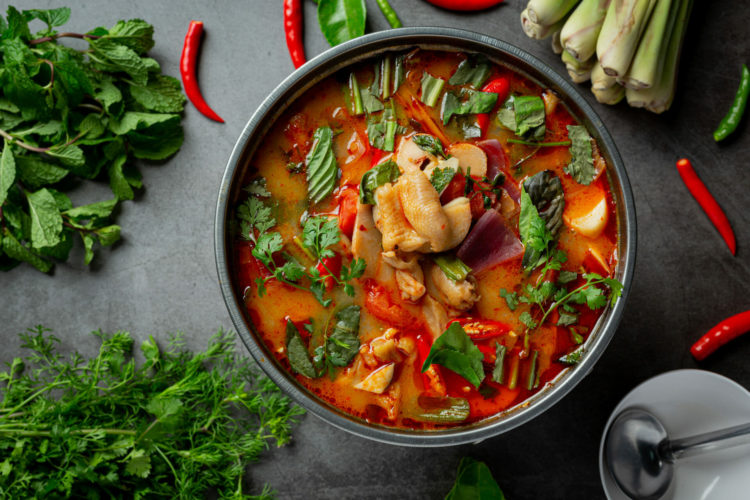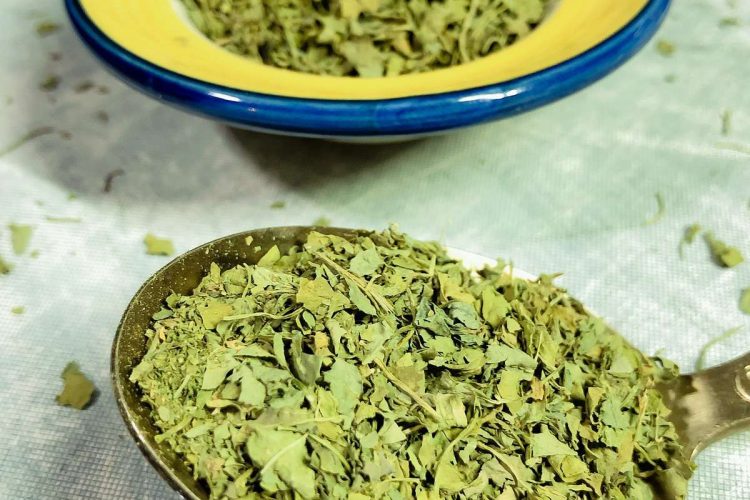Tamarind – What Is It And How To Use Tamarind Paste
Home » Indian Cooking Blog » Spices » Tamarind – What Is It And How To Use Tamarind Paste
- December 20, 2020
- No Comments
Tamarind is a souring agent to add sweetish tanginess to many Indian and South Asian dishes. Read on to find out what is tamarind , the different forms and how to use tamarind paste for cooking.

Each time I make tamarind paste, from tamarind block, I cant help but break a piece and chew on the sweet sour stickiness of the fruit.
It triggers many childhood memories of buying taramind chutney from the street side vendor outside school, who would wrap it in a torn piece of newspaper (they were eco-friendly then) or climbing on tamarind trees on hot summer days to break the fruits and eat them like candies, spiting the large pips out or collecting the pips to play with them with a bunch of friends.
At that time little did I know the importance and uses of tamarind in Indian cuisine as a flavour enhancer, cooling agent and in some cases also a preservative.
What Is Tamarind
Tamarind belongs to the legume family and is a tropical fruit. The fruits grow in a crescent shaped seed pod with a hard shell covering.
The texture of a tamarind fruit is similar to that of date that is it is dark brown in colour with a large seed inside. This is the reason some refer tamarind as ‘Indian date’.
But do not be fooled by the name as the taste is completely different to sweet date.
Tamarind In Other Languages
Although used in regional world cuisines, Tamarind is known by different names, in different parts of the world.
- Tamarind in Hindi – Imli
- Tamarind in German – Tamarinde
- Tamarind in French – Tamarinier
- Tamarind in Spanish – Tamarindo
- Tamarind in other south Asian languages – Assam, sampaloc
How Does Tamarind Taste Like
Tamarind has a high level of Tartaric acid hence making it a sour fruit. The taste can range from being very sour to sweet although even sweet tamarind will surely have a tanginess to it.
It is the combination of sour sweet that makes your tongue tingle. Something those who like sour gummies find irresistible to stop chewing on.
It is this unique tamarind taste that makes it an integral part of many traditional Indian dishes to balance, enhance and complement other flavours.
Uses Of Tamarind In Different Forms
Gone are the days when the only type of tamarind used for cooking purposes was the whole tamarind plucked straight from the tree.
In India tamarind is added to dishes especially during the summer months.
Modern days, have changed the way you can now buy tamarind. However whole or fresh tamarind pods ( the green once) are not really used for cooking purposes. They are mostly eaten as a pleasurable tongue tingling snack.
In this section we will learn how to use tamarind in the different forms available.
However, first let us see the different ways to cook with tamarind. Here are some ideas:
- Add to salad dressings for a tangi sweet flavouring.
- Add in sweet pickles or chutneys to balance the sweetness and give it a slight sour taste.
- Being acidic, tamarind paste or sauce can be added to marinades as it helps to soften and tenderize meat.
- Add to curries , stir-fries or sauces to enhance neutral taste and give it a flavour lift.
- Add it to rice and noodles dishes.
- Add few teaspoons to drinks such as cocktails or mocktails.
How to use tamarind paste or concentrate
This is the readily available and most concentrated form of tamarind available in the market. You can get them in jars or even tubes.
Buying a pre-made concentrate or paste makes it easier to use tamarind in cooking without the need to extract the juice from a tamarind block. You just need to take a spoonful straight out of the jar.
You can use a teaspoon of tamarind paste in a dish to begin with and slowly increase the quantity to adjust to your taste.
Avoid adding too much of the concentrate at the very beginning as this may make the dish too sour.
How to use tamarind block
This is perhaps the most traditional way of cooking with tamarind. This is where the shell and most of the seeds and roughage or strings are removed from the fruits and pressed together to form a semi solid block.
To make tamarind pulp from the block, you will need to break a lemon sized chunk from the block and mix it with 1/4 cup of hot water ad leave it soaking for about 10 – 15 minutes. Then use your fingers to squeeze the flesh so that it melts into the water and what remains is the roughage and seeds that needs to be discarded. It is a good idea to sieve it pulp for a smooth texture and use tamarind pulp for cooking.
How to use tamarind powder
Although not very popular, it is the least concentrated form of tamarind you can buy. Mainly used for making drinks, you can use a teaspoon of two of the powder directly in the dish you wish to make or make tamarind paste by adding 2-3 teaspoon of powder in 3-4 tablespoon of warm water and mixing it well.
How to make tamarind water from paste or tamarind powder
If you wish to make tamarind water to add to juice or for something else then all you need to do is add 3-4 teaspoon of tamarind paste to room temperature water and mix well.
How much tamarind to use?
Being more on the tart side, it is important to know how much tamarind to use in cooking.
A small amount of it goes a long way. This also depends on the form of tamarind you use and also the sourness level of it.
The more sour or concentrated tamarind means lesser the amount needed.
But just as a guidline, 1 tsp of concentrated tamaring puld or paste roughly equals to one and half tablespoon of tamarind pulp made with tamarind block.
Thankful for every click to share:
Related Posts
1 1 vote Article Rating A staple in South Asian cuisine, the uses of cloves... ...
There are those odd occasions where you may have misjudged the heat of chilli ...
Fenugreek leaves is a herb that may not be readily available everywhere. Here ...
To rate click on stars
Related Posts
1 1 vote Article Rating A staple in South Asian cuisine, the uses of cloves... ...
There are those odd occasions where you may have misjudged the heat of chilli ...
Fenugreek leaves is a herb that may not be readily available everywhere. Here ...



